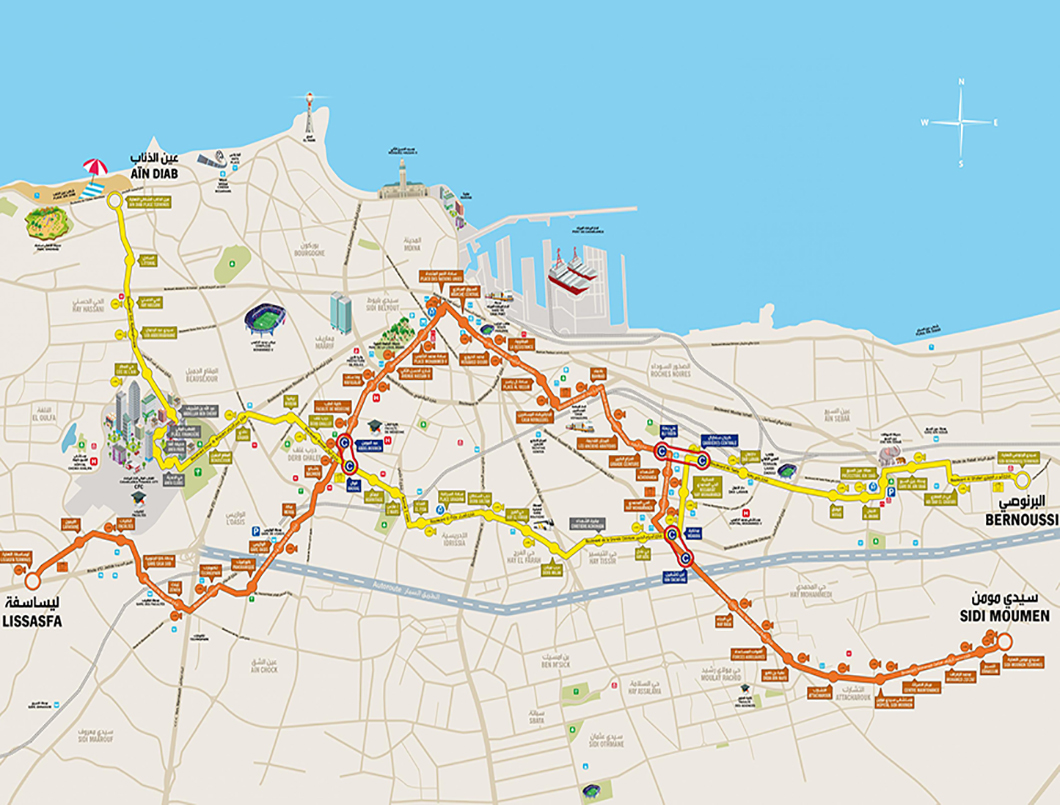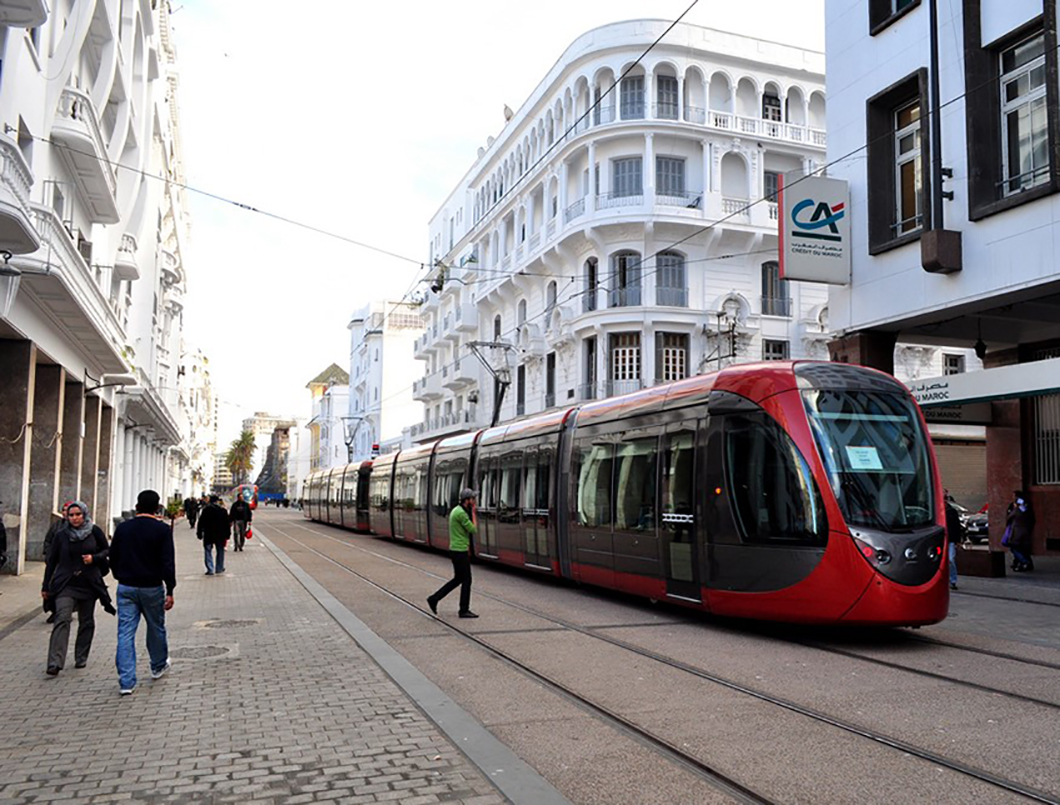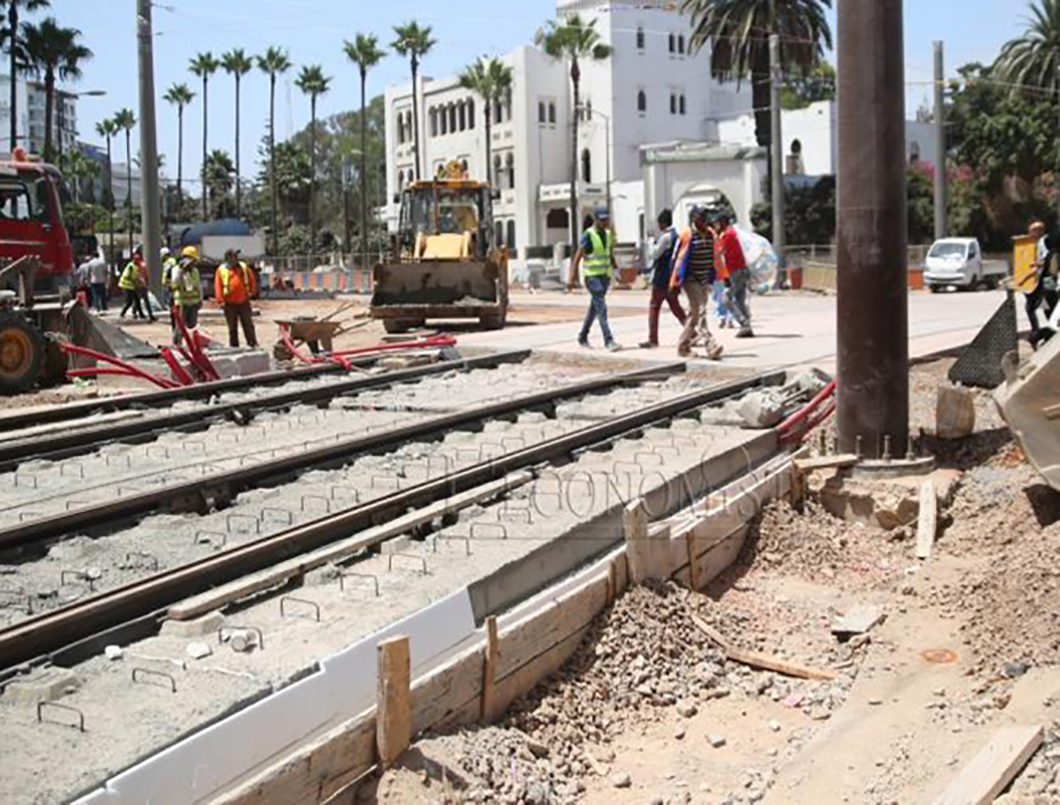
Close

Approach Words: Integrated City, Sustainability, Urban Livability
Public Policy Instruments: Financial Mechanism, Organization, Physical Intervention, Planning
The Casablanca Tramway Project is a public transportation project and one of the biggest infrastructurali projects in Morocco1. The project is a primary element of the Casablanca Urban Development Programmer I which aims to facilitate the integration of Casablanca’s suburbs, including Dar Bouazza and Lahraouiyne, with the central urban area (Casablanca)2. As such, The Casablanca Tramway project comes to connect all these areas and seeks to address the strong growth in daily travels3, enhance the urban environment by reducing greenhouse gas emissions and create a more sustainable and accessible city4. The whole program, including the tramway project, will improve the quality of life in Casablanca while also fostering its economic potential5.
The Casablanca tramway is a low-floor tram system. It is the second tramway to be built in Morocco after the Rabat–Salé Tramway6. The current Tramway network is longer than the first tramway, with more stations, and comprises two active lines, T1 and T2, with 70 stations and 47 km of tracks7.

Title: Map of the Implemented Network (T1 & T2) of Casablanca Tramway.
Source: Click Here

Title: The Casablanca Tramway crossing through a neighborhood.
Source: Click Here

Title: Top View of the Casablanca Tramway.
Source: Click Here

Title: Construction Works of the New Lines (T3 & T4).
Source: Click Here
The project consists of three phases. The first two phases, which include the tramway Lines T1 and T2, are implemented while the remaining lines require implementation. The components of phases and their timeline are as follows:

Owner/Developer (Public)

Owner/Developer


The Casablanca Tramway project is initiated by Casa Transport, the public transit authority in Casablanca, in collaboration with RATP (Paris Transit Authority) in 2009. The consortium is responsible for the operation and maintenance of the tramway20. This governance model has been implemented by numerous municipalities in Morocco as a means to develop the essential expertise required for such contracting authorities21. In addition, Casa Tram awarded the construction management contract for the tramway to a consortium comprising Systra, a French company, and CID Engineering & Development Consultants from Morocco22. This consortium was responsible for managing aspects related to the tendering process, project design, and construction supervision23. The Moroccan National Government provided $135.7 million in funding for the implemented part of the Casablanca tramway project. The remainder of the necessary funds was secured through allocations from municipal budgets and loans24. AFD was asked to finance both the second and first railway lines. They provided a 30 million Euro loan and a 500,000 Euro grant for the second line, which followed their financing of the first line with a 23 million Euro loan and a 1.3 million Euro grant in 201225.
Project Link
Endnotes
References